Best Go Programming Books to Buy in January 2026

Go Programming Language, The (Addison-Wesley Professional Computing Series)



Learning Go: An Idiomatic Approach to Real-World Go Programming


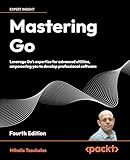
Mastering Go: Leverage Go's expertise for advanced utilities, empowering you to develop professional software



100 Go Mistakes and How to Avoid Them


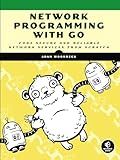
Network Programming with Go: Code Secure and Reliable Network Services from Scratch



Learn Concurrent Programming with Go


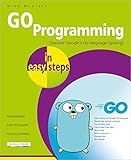
GO Programming in easy steps: Learn coding with Google's Go language


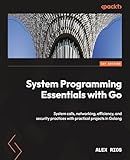
System Programming Essentials with Go: System calls, networking, efficiency, and security practices with practical projects in Golang


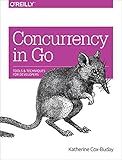
Concurrency in Go: Tools and Techniques for Developers


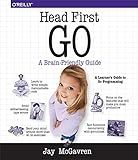
Head First Go


In Go programming language, a struct is a user-defined composite data type that groups together zero or more values with different data types into a single unit. Structs provide a convenient way to organize related data and define an object with its properties. Here's how you can create and use structs in Go:
- Defining a struct: To create a struct, you start by defining its structure using the type keyword followed by the struct name and the fields enclosed in curly braces. Each field is defined with a name and a data type. type Person struct { name string age int city string }
- Creating an instance: To create an instance of a struct, you declare a variable of struct type and initialize its fields using the dot notation. var p Person p.name = "John Doe" p.age = 30 p.city = "New York"
- Initializing a struct: You can also initialize a struct during declaration or use the new keyword to allocate memory for a struct and return a pointer to it. p := Person{name: "John Doe", age: 30, city: "New York"} pPtr := new(Person)
- Accessing struct fields: You can access struct fields using the dot notation (.) followed by the field name. fmt.Println(p.name) // Output: John Doe
- Structs as function parameters: Structs can be passed as function parameters, allowing you to pass and modify entire structs across functions. func updatePerson(p *Person, newName string, newAge int, newCity string) { p.name = newName p.age = newAge p.city = newCity } updatePerson(&p, "Jane Smith", 28, "London") // Pass a pointer to the struct
- Anonymous structs: Go also allows you to create anonymous structs without declaring a new struct type. These are useful for temporary or one-time use cases. p := struct { name string age int city string }{ name: "John Doe", age: 30, city: "New York", }
Structs provide a powerful tool for creating complex data structures and organizing related data. They are widely used in Go programs and can be leveraged to build robust and modular applications.
What is the difference between a struct and an array in Go?
In Go, a struct and an array are both used to store and organize data, but they differ in terms of structure and usage.
- Structure: Struct: It is a composite data type that allows you to combine different types of values into a single entity. It is like a container that can have multiple fields of different types. Array: It is a fixed-size sequence or collection of elements of the same type. All elements in an array must be of the same data type.
- Size and Flexibility: Struct: The size of a struct is determined by the sum of the sizes of its fields. Structs can have different types and sizes of fields, making them more flexible. Array: Arrays have a fixed size that is determined at the time of declaration. Once declared, the size of an array cannot be changed, making them less flexible.
- Usage and Access: Struct: Structs are commonly used to represent structured data or entities where you need to define custom attribute names and types. Struct fields are accessed using dot notation, e.g., myStruct.fieldName. Array: Arrays are used to store a collection of elements of the same type where the order and index of elements matter. Array elements are accessed using square brackets and index, e.g., myArray[index].
- Passing and Copying: Struct: When passing a struct to a function or assigning it to another variable, a copy of the struct is created. Array: When passing an array to a function or assigning it to another variable, a copy of the array is not created; instead, a reference to the underlying array is passed.
Overall, structs are more versatile and can hold different types of data, while arrays are fixed-size collections of elements of the same type. Structs are typically used to represent complex entities, while arrays are used to store ordered collections of data.
What is the role of the "struct{}" type in Go?
In Go, the "struct{}" type is a struct with no fields. It is sometimes referred to as an empty struct or a unit struct. It is used primarily as a placeholder when we want to represent the absence of any data or when we want to define a struct type that has no fields.
The "struct{}" type is often used in scenarios where we are only interested in the existence or non-existence of a value, rather than the actual value itself. It is commonly used in channel synchronization, signaling, or synchronization primitives like a sync.WaitGroup.
One of the key features of the "struct{}" type is that it occupies zero bytes of memory, meaning it has no memory footprint. This makes it an efficient choice when we don't need any data, but want to represent the presence of something.
Here's an example illustrating the usage of "struct{}" as a synchronization primitive:
package main
import ( "fmt" "sync" )
func main() { var wg sync.WaitGroup
wg.Add(1)
go func() {
defer wg.Done()
fmt.Println("Goroutine 1")
}()
wg.Add(1)
go func() {
defer wg.Done()
fmt.Println("Goroutine 2")
}()
wg.Wait()
fmt.Println("Main Goroutine")
}
In the example above, we create a wait group wg to synchronize multiple goroutines. We use struct{} as the data type for our wait group, indicating that we don't need any data, just the existence of goroutines.
How to create a struct with default values for all fields in Go?
In Go, you can create a struct with default values for all fields by using a constructor function or a literal declaration. Here's how to do it:
- Using a constructor function: type MyStruct struct { Field1 int Field2 string // Other fields... } func NewMyStruct() MyStruct { return MyStruct{ Field1: 0, Field2: "", // Set default values for other fields... } } // Usage: myStruct := NewMyStruct() In the constructor function, you can initialize each field with its default value.
- Using a literal declaration: type MyStruct struct { Field1 int Field2 string // Other fields... } var defaultMyStruct = MyStruct{ Field1: 0, Field2: "", // Set default values for other fields... } // Usage: myStruct := defaultMyStruct Here, you define a global variable defaultMyStruct with the desired default values for each field. You can then assign this variable to create a new struct with default values.
Both approaches allow you to create a struct instance with default values assigned to all fields. Choose the one that best fits your needs and coding style.
How to create a copy of a struct in Go?
In Go, creating a copy of a struct can be done by simply assigning the struct variable to a new variable. Here's an example:
// Define a struct type type Person struct { Name string Age int }
func main() { // Create an instance of the struct person1 := Person{Name: "John", Age: 30}
// Create a copy of the struct
person2 := person1
// Modify the copy
person2.Name = "Jane"
person2.Age = 25
// Print the original struct
fmt.Println(person1) // Output: {John 30}
// Print the copied struct
fmt.Println(person2) // Output: {Jane 25}
}
In the above example, person2 is a copy of person1. Modifying person2 does not affect the values of person1.
Keep in mind that since assignments in Go are value assignments, the copied struct will have its own separate memory space.
How to create an array of structs in Go?
To create an array of structs in Go, you can follow these steps:
- Define the struct type by using the type keyword. For example, let's say we want to create an array of Person structs with name and age fields:
type Person struct { name string age int }
- Declare an array of the struct type you defined. Specify the length of the array and use the struct type as the element type. For example, to create an array of 3 Person structs:
var people [3]Person
- Initialize the array elements with values. You can do this using the index of each element.
people[0] = Person{"Alice", 25} people[1] = Person{"Bob", 30} people[2] = Person{"Charlie", 35}
- Access the elements of the array using the index and the dot (.) notation to access the fields of each struct.
fmt.Println(people[0].name) // Output: Alice fmt.Println(people[1].age) // Output: 30
Here is the complete example:
package main
import "fmt"
type Person struct { name string age int }
func main() { var people [3]Person
people[0] = Person{"Alice", 25} people[1] = Person{"Bob", 30} people[2] = Person{"Charlie", 35}
fmt.Println(people[0].name) // Output: Alice fmt.Println(people[1].age) // Output: 30 }
This example demonstrates how to create an array of structs in Go. You can modify the struct fields and array size according to your requirements.
What is the purpose of using the "new" keyword when creating a struct in Go?
In Go, the "new" keyword is used to create a pointer to a struct.
When you use "new" followed by a struct type, it allocates memory for the struct and returns a pointer to it. Without using "new", you can create a struct value directly, but if you want to work with a pointer to a struct, you need to use "new".
Using the "new" keyword is beneficial when you want to pass the struct to a function and mutate its fields inside the function. If you pass a struct value to a function, any changes made to the struct fields inside the function will not be reflected in the calling function since the struct is passed as a copy. However, if you pass a pointer to a struct to a function, any changes made to the struct fields will be reflected in the calling function, as memory is shared through the pointer.
Here's an example to illustrate the usage of "new" keyword:
type Person struct { Name string Age int }
func main() { // Create a pointer to a Person struct using "new" p := new(Person) p.Name = "Alice" p.Age = 25
fmt.Println(p) // Output: &{Alice 25}
}
In the example above, "new(Person)" returns a pointer to a Person struct, which is then assigned to the variable "p". You can then access and modify the struct fields using the pointer "p".
